Paul Witte and Herb Flower were friends who collaborated from 1988-93 to create the BBS door game Thieves’ Guild and its graphical front-end client for the Atari ST under the “Mythyn Software” banner.

Flower went on to found the Rewolf Entertainment studio, which produced Gunman Chronicles. Witte and Flower teamed up again in 2001 as “Mythyn Interactive” to develop the MMORPG Linkrealms.
Few folks are likely to remember Thieves’ Guild because it was released for the ST in the 1990s, just as that platform was dying out — and that’s a shame. It’s a fun game with interesting ideas, and its front-end client has pretty much the best pixel art of any BBS game that I’ve come across.
Did you play? Share your memories in the comments. Want to try Thieves’ Guild right now? There is still an Atari ST BBS running the game. I’ve included a link to play at the end of the interview.
This interview was conducted by Skype on May 11, 2020. It has been edited for length and clarity.
Do you enjoy my retrocomputing interviews on Break Into Chat? Please join my email list and stay in touch. 📬
How did you get into computers? You were both Atari guys, I guess.
PAUL: Yep. I got my first computer when I was 13. I actually was calling BBSes before I even had a disk drive for my Atari 130XE. … Yeah, I loved the BBS thing. That was all I really could do with my computer at the time because I didn’t have a disk drive. Loading games off the cassette was ridiculously slow.
So once I got my disk drive then yeah, I started a BBS right away. I ran a BBS up until the web really got going. But anyway, I had a neighbor who had an Atari 800XL so that’s how I got interested.
Was it the same BBS all those years?
PAUL: Yeah. I ran it for a few years on my 130XE. Then when I got an Atari 1040ST, I switched it over and started running my BBS on the 1040. But it was running consistently throughout that time. I went through a few different BBS packages.
At the same time, I was taking some programming classes and we were learning Pascal in my high school. I got a Pascal compiler for my Atari ST and I wrote a few other packages. One was a program called Advice Door. It was an anonymous messaging system where people could post problems that they had in their life, and people could anonymously reply and help them out. I think that was the first thing I wrote. Then I wrote another game called Sysop vs. User Games. You would page the sysop like you would normally to chat with the sysop, but instead it would go into a game mode where you could play a game against the sysop in real time. It had blackjack, and there was a fighting game where you just take turns attacking each other.
I did Thieves’ Guild after that, and that ended up being a much bigger project. I was working on it about the time I met Herb.

We were both members of a local Atari users group, [Central Utah STar Group in Orem, Utah]. I remember they were having a graphics competition where people were submitting art that they had created with NEOchrome. Herb had submitted something that was really awesome. It was these swirling purple clouds and stuff — which we later incorporated into the final Thieves’ Guild Emulator [Editor: This is what they called the graphical front-end for TG].
I remember seeing that and saying, “Holy crap, you drew that?” And he was like, “Yeah.” We found out later that we went to the same high school. So we kept in close contact and I knew he was a great artist.
I wanted to have a [physical] map for Thieves’ Guild. So I asked Herb if he would draw a map for it and we would sell it. So we did that, and that was our first foray together on this project. Then just over time we had the idea to do the emulator. And that’s how that [began].
You give yours now, Herb.
HERB: All right. Well, I started on the Commodore 64. And I think in eighth grade, I got an Atari ST. My parents weren’t really rich. I know now that it was a big sacrifice for them. I mean think about the price of these things back then in those dollars. It would be like buying a car for your kid.
Then I got GFA Basic. And boy, I liked that language. I got a book that had a lot of tricks and tips. One of them was this POKE routine that could swap the physical screen address, so you could page flip. And with page flipping came a lot of power. They had a blit bit command that let you copy rectangles of graphics around. So I wrote a little game called Dark Fortress.
PAUL: Dark Fortress, which was the same name as my BBS.

HERB: It just seemed like a cool idea. I don’t think it ever really got spread. I never put a lot of effort into publishing it but I did finish it. [Editor: I recovered this game from Herb’s disk and you can download and play it on an Atari ST (or emulator) today!].
PAUL: This is a good game. I saw it.
HERB: So, you know, the [Thieves’ Guild] Emulator. Paul was one grade higher than me, but we still took the same courses in computers. The computer class used a minicomputer so it was not very interesting, graphically — and that’s what I was interested in. But Paul was writing this text game. And I think over 10 minutes we once said, “Hey, what would happen if …?” Now I didn’t have the technical ability to write the emulator. I didn’t know how to dial the modem, set it up, and all that stuff. But we had another friend who was way nerdier than I was on that stuff.
Is that Robert Fletcher?
PAUL: Yes. He wrote the communications portion of the emulator.
HERB: Yes. It was just 20 lines somewhere, but it was gold. Pretty much the rest of it was me, and it wasn’t too complicated really. I remember us first getting some quick menus and the village background and what an accomplishment that was back then.
[Pause] Kids these days, they think pixel art is cool. But they don’t know why we did it. They’re doing things with pixels that are not legal. You can’t rotate your square pixels smoothly. That’s just not done. They don’t understand-
You can’t use a million colors.
HERB: Yeah. And freaking volumetric fog. They don’t understand. It was all about limitations.
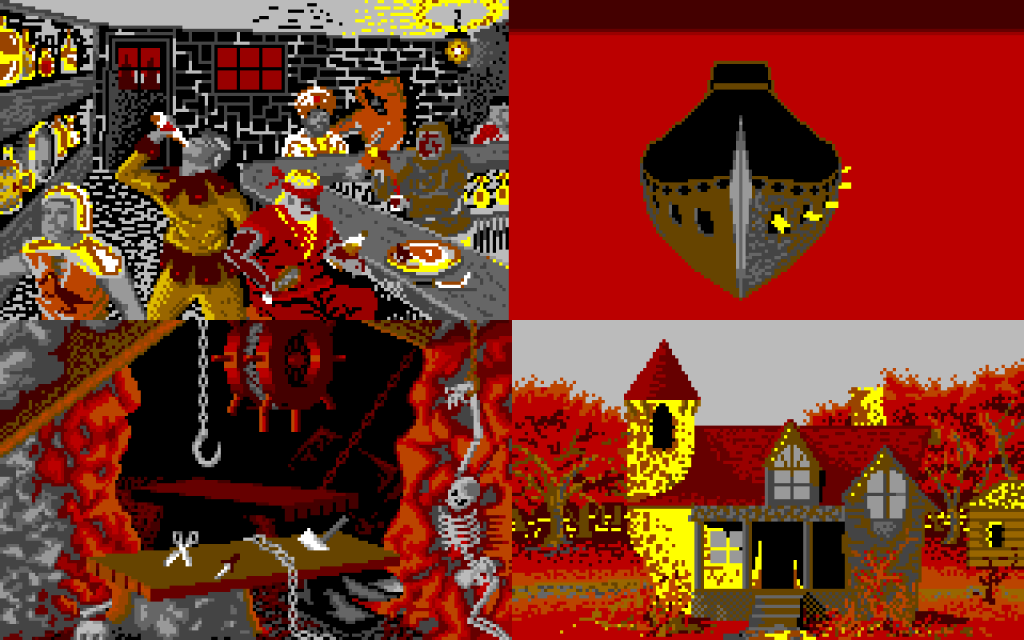
So the Atari, with its 16 colors out of 512, took a lot of planning. You say, okay, first, we’ve got to have black, white, and red. Then how many colors do you get for your background versus how many colors do you get for your character [sprite]? Are there some colors that the characters in the background are always going to just want to have? And you come up with a plan.
So there was some complexity. And I remember being at Paul’s house, and we would talk about it: “Okay. Here’s the kind of characters I’m going to have: there’s an elf, there’s a skeleton.” And I’d go home and work on them.
You’ve gotta make sure you have enough space for them to swing an arm. It was crowded back then in the sprites.
We ended up being able to do digital sound. I had a cartridge and it would do the digitizing. But we couldn’t play [the sounds] at the same time as we could update the graphics. I didn’t know how to do that. So it would get little hiccups in the sound, but [it was] good enough.
I don’t even know how long it took me to get it all done. You have to remember, today I would just sit down, do it full-time, and be done with it in no time. Back then, we didn’t know what an awesome period of history that was. We didn’t know that it was a time that people would be nostalgic for. That all the great companies like Activision were being formed right that minute. We would have been a lot more serious if it was more than just, “Hey, maybe we’ll do this. Maybe we’ll make $1,000. Who knows?”
The other thing about it was there was no internet. So it was a lot of visiting to hash out, “Okay, here’s what the codes are going to be. Yada yada.” I remember the first time I made that title screen with the portraits. I was half done with it and Paul wanted to see it. I said, “Well, I’m not driving over to your house, that’s 10 minutes.” And Paul was like, “Do this thing where you can send it to me over the phone.” And I’m like, “What are you talking about?” And we did it and it worked and it blew my mind.
It may have taken the same 10 minutes, I imagine.
HERB: It probably did.
It’s so funny to me. My Atari and all my disks disappeared. I didn’t throw them away. Who did? Somebody did. Then a few years ago, I bought a house. A friend died and I bought his house. And I was going through his stuff and he had an Atari Falcon with both monitors and a working hard drive and all this stuff. I set it up, mainly for eBay purposes. Much as I thought it was fun, I didn’t have room to keep that kind of stuff around.
When you see that 320×200, it’s really funny because in your imagination the graphics were a lot bigger and better back then. And when you see how small 320×200 actually is … The idea of painting with a mouse seems hard to imagine now.
PAUL: And you also need to consider what Herb is doing today.
Long road from there to here, huh?
HERB: Well, I’ve been there the whole way, though. That’s the neat thing. When I was a little tiny kid, Gorf came out and you’d see it at the grocery store. Pac-Man and stuff. It’s kind of like those old people [whose lives] went from horse and buggy to jets. They got to see the whole evolution of science. People my age, we got to see computers and games specifically go from Pong to …
PAUL: I also see that with BBSes to the web. We’ve seen that whole evolution. I remember chatting with people, multi-chat, on CompuServe, like today.
HERB: Well, that’s my story. We did it. And after Thieves’ Guild, I wanted to continue. So I told Paul, “Hey, I’m going to write a sequel called Assassins Guild. And it’s just going to be better because I’m going to, from the start, think about the graphical side merging with it. It won’t just be a text game. The graphics won’t be an afterthought.”
And it was really turning out to be pretty awesome. But my Atari’s disk drive motor was slowing down and starting to create bad disks. And basically it got destroyed. (Sigh) You have backups and you go to them and you realize it was the only floppy drive that would read them. When it finally died, no other drive could read those disks. … But yeah, it was lost. It had better graphics and everything. I mean, it was really neat.
But it was still designed as an interactive BBS game?
HERB: It was. It was about a third of the way done. It took place on the same continent [where Thieves’ Guild] took place. It was the same-style thing. Travel between towns, encounters, but doing things that were not thieving, that were assassin things.
PAUL: I would like to point out that I was a big fan of Alternate Reality at the time. And you can definitely see that influence in Thieves’ Guild. Even the way the emulator looks reminds me a little bit of Alternate Reality.
The big idea for me with Thieves’ Guild was I didn’t want to make another fighting game where you die. The whole idea with Thieves’ Guild is you’re a thief. You can die, but [what you really want to avoid is] going broke, losing all your money. [Other players] don’t kill you, they steal your last dollar, and that throws you out [of the game].
Another interesting bit of history with Thieves’ Guild, we actually were in negotiations with CompuServe. They were very interested in potentially licensing the game and adapting it for their platform. What they really liked was the emulator and the graphics because they were pretty awesome at the time for [an online game]. What killed the deal though was the fact that it was for Atari. They wanted Mac and PC. Which was a shame because it probably would have happened had it not been for that. [Editor: On the day I published this interview, I stumbled across evidence of this within the source code for v2.5b of the game]
How did that came about? Did somebody reach out to you?
PAUL: I don’t remember if I reached out to them or if they reached out to me. I do remember we put together a little montage of printouts of all the graphics and samples and stuff. You remember that, Herb? Putting that together?
HERB: No, I don’t.
PAUL: Oh, I remember it. I wish I still had it.
HERB: But you know what? I do have some film photographs of the screen, which was my best way to capture, screen grab for physical. That’s the only thing I have to remember it by, other than some maps. I used to have the Thieves’ Guild bible, which was my big stack of notes and papers and stuff. And after the game came out or maybe a month before, once again, it vanished. And I cannot tell you, because I was living alone. How the hell does that vanish? And I’ve never seen it since.
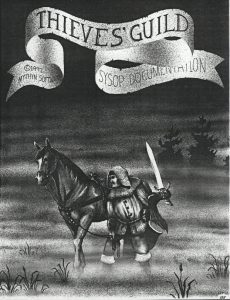
PAUL: You know, there was always rampant piracy back then. A lot of people, when they would publish their door game, they would publish the game in full and then they would have some kind of a registration key which would unlock all the features.
And unfortunately, it wasn’t too hard usually for people to hack that and create their own BBS registrations. Then they’d have the full game without paying for it. So we went a different route. We compiled an unregistered version, and that’s what we distributed. When somebody bought it, we actually mailed them a physical disk that had the full version on it and we also did the key thing.
So the features were actually missing from the distributed version.
PAUL: Yeah. That way, they can’t hack shit because [it isn’t in] the program. People who actually paid for it seemed to be more reluctant to share it, I guess. But that in a way maybe that limited …
HERB: What were we thinking? All right. We sold it to the sysop, what did we charge for it? We should have given it to the sysop for free and nickel-dimed the players.
I was going to ask you about that, Herb. A few BBS door game creators would offer add-ons to the users. But generally the business model was to sell registrations to the sysops. But you guys were different. You had a lot of things that you were offering directly to users. But, like you say, the emulator, probably the most attractive out of all of them, you were giving away for free.
HERB: Yeah, you know what? We were on drugs. I cannot tell you why we settled on that business model because in later projects we had much more sane models. But the idea of charging the sysop meant that we had less distribution, especially with good copy protection.
PAUL: Yeah.
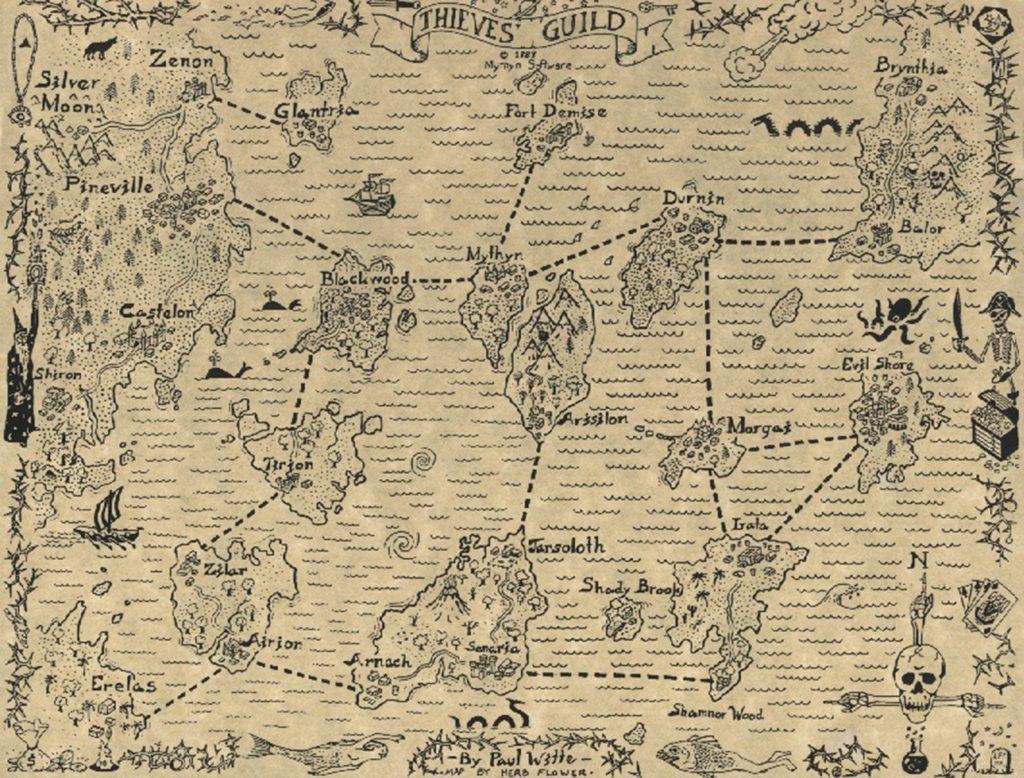
HERB: We offered the map and some stuff. I took a stencil and airbrushed color on the map. So it had a real parchmenty kind of look.
PAUL: Yeah. They were all hand-painted by Herb. And Josh, I totally forgot, you just reminded me. We did sell a standalone version of it, a single-player version that you could just keep playing without having to wait till the next day to play your next day’s turn.
Which is exactly what I need now. (laughs) Do you recall what you were charging for those? I think I saw a $3 price for the map. But I don’t think I saw a price for the standalone version.
PAUL: It was probably $25, $30, something like that. [Editor: After the interview, I found an advertisement within the Thieves’ Guild game offering the stand-alone version for $8]
HERB: Well, that’s the thing. The map is really a great little thing, and we charged very little for it. If we had any brains, we would have come up with a $10 package for the players. And maybe had an enhanced emulator, maybe had, I don’t know…
PAUL: Virtual items.
HERB: A pet. A pet you could have.
HERB: Something like that. Remember, though, this is so far back that you couldn’t look at World of Warcraft and say, “Let’s do what they did.”
Games are all based on other games. And they’ve always all copied Ultima Online. But we didn’t really have anyone to copy. I mean in those days you might think you were a genius game designer and by today’s standard you look at it and say, “Oh no, that was crazy. Why would you do it that way?”
I will insert something here. The game had a fatal flaw. It was possible and I did it and I regretted it every day.

There was this guy Pain, played on Paul’s server. He was an excellent enemy, right? He was good, smart, and he would attack at the right time and withdraw at the right time and disappear. We had this vortex that, if you went through this certain sea passage, could throw you into an evil city. And then we had another feature where you could send assassins after people, but only if they were in an evil city. And it was possible, if a person unluckily fell through the portal, and you spent all your money on assassins, and you robbed them first, something like that, you could kill someone. Maybe they had a great character, and then they would show up the next day and he’d be bankrupt, gone.
We did that to Pain and he never played again. And that was the goal. That was the fun of it, to defeat your enemy. But at the same time, because we were the developers, we knew the ins and outs. It wasn’t fair and we should never have allowed it to happen. It’s my main regret as a player, killing Pain. He was fun to have around. Paul, didn’t Thieves’ Guild have [an ending]? Couldn’t you win?
PAUL: Oh yeah. Are you aware of the endgame, Josh?
I know that there is one, but I’ve never gotten very far in the game. I don’t know many of the secrets beyond a few I picked up myself, plus the hints in the documentation and the hints that I scraped off of your message board from the early 2000s.
PAUL: Yeah, throughout the game you can get hints from the NPCs and the bartender and stuff.
So in addition to this competitive factor of the game, getting rich and powerful basically, there were quests to solve. And all of these quests eventually would lead you to being able to escape the world.
The idea was the player gets trapped in this world. You’re a thief in the Thieves’ Guild all of a sudden. And very much, again, paralleling Alternate Reality in that sense.
There is a way to win the game, there’s an endgame, and there’s a great sequence in the end if you’re playing with the emulator. That swirly cloud image I was talking about earlier that Herb drew for that competition, that’s in the game.
But yeah, there was a pretty cool end sequence, which, to this day, I don’t know if anybody ever saw. We put a lot of effort into it. I don’t know if anybody solved the game while they were playing the emulator.

HERB: Yeah, the silver pyramid.
[Editor: In the months after this interview, I solved the game and saw this sequence! You can read more about it in this blog post]
PAUL: And people did win the game, but it didn’t happen very often. Even if you knew exactly what you were doing, it probably would take you at least a month. But once you won, that ended the game for everybody. You would be added to a special list of winners who had solved the game, and the game would reset at that point for everybody.
What you’re describing reminds me of a game by the rock musician Shooter Jennings. He created a very narrative game called Freedom Train a couple of years ago that is very similar to how you described Thieves’ Guild. It’s a big world you can explore, there are these side quests, and it has a very definite ending. And any player who does reach that ending causes the entire game to reset for everyone.
HERB: You could say that that’s a controversial thing to do. But you have to remember that a game like this can stagnate. Not knowing when you’re going to die maybe could compel you to get off your butt. And it causes people to take risks that they might not have taken, and it forces the game forward. I don’t think it’s a bad idea as long as everybody knows in advance that’s how it works.
PAUL: I also think it worked just because [solving the game] wasn’t super easy to do. So it didn’t happen a lot. Otherwise it could have definitely been a problem.
Because we’re talking about gameplay and people reaching the ending, I’m curious. As Thieves’ Guild was gestating between 1988 and 1993, what kind of a community was there around it? How many people were playing this?
PAUL: We were very active in the users groups around here. There were various BBS users groups, computer users group, game users groups. People would just bring their own machine. It wasn’t just Atari, it was whatever. We had a very active BBS community here in Utah. And we actually would have Thieves’ Guild parties. We would get together and we would play the standalone version of the game throughout the night, prizes for whoever won at the end of the night. It was just a good time. And we did several of those, right Herb?
HERB: Right. Three or four. I remember a specific one. Gosh, did we bring one of my arcade machines or a pinball machine?
PAUL: We would play MIDI Maze, I remember playing MIDI Maze.
HERB: Oh, MIDI Maze, yeah. “Ren & Stimpy” playing on the TV.
PAUL: So yeah, we had a lot of fun. We had a very active BBS community, not just online but in real life as well.
How many local boards were running Thieves’ Guild during development?
PAUL: I would guess there were about three or four, including mine. Basically all the Atari ST-based boards in our area at the time.
And in terms of selling registrations and maps and the standalone version and stuff, do you have any notion how many of those things that you sold?
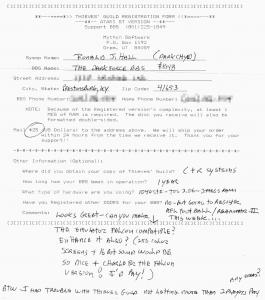
PAUL: I think we probably made $2,000 or $3,000, something like that. So, what’s the amount?
HERB: (laughs) Big money, big money, no whammy, no whammy, no whammy.
PAUL: What’s that divided by 25? I’d say we sold about a hundred or so.
HERB: Yeah, it was some. And Paul has a stack of hand-written notes and stuff from people saying how much they loved it.
PAUL: Yeah I think I actually have all the order forms that people mailed in. People would write and tell us.
HERB: Make a poster or collage that stuff, Paul.
To me, one of many interesting things about this game is that physical aspect. You actually had a paper map. It’s like Infocom’s feelies.
HERB: Remember back then, you didn’t really have the option of a lot of digital product. If you wanted to sell something, you sold some thing.
PAUL: It was surprising to me when I put Thieves’ Guild online [again on a telnet server in 2001], some of my old friends posted a scan of their map. They were like, “I still have my map.”
Wow.
PAUL: A decade later. I guess some people really liked it.
Another thing is, the fact that we were on the Atari, not PC. A friend of mine, [Myron Crandall], ported Thieves’ Guild to the PC, but it was right about the time that the web was taking off and the demise of bulletin boards.
It was around 1995.
PAUL: Yeah, and I don’t even know if we even ever publicly released the PC version.
You mentioned resurrecting the game over telnet in 2001. What prompted you to do that?
PAUL: I found some telnet software and used it to run the PC port that Myron did. I did that directly via a website and telnet server, without using any BBS software at all. People really enjoyed that. I don’t remember why I eventually took it down. Maybe I should resurrect it. Myron did add some extra features to the game in the PC version, mostly some more random events. I have the source code for that, it was ported to Turbo Pascal.

HERB: Well, I’ll tell you this much. It was a project. We did it, we were done with it. I wasn’t that excited about it. It’s kind of like, I suppose if somebody had a split-window Corvette back in the 1960s, it was no big deal. “Oh, it’s a few years old, what a piece of crap.” But now you’re like, “How did I sell that car? I’m an idiot.”
We were stupid. We were at the beginning of online games. We were there. Standing there. And instead of building ourselves up into a World-of-Warcraft-style big company, we just fooled around and did it and moved on to something else. Paul went his way, I went my way for quite a few years after that. One of my regrets is that we didn’t take the Internet seriously, and say, “Let’s make these things for the web.” Who knows where we would be in a parallel dimension where we did that?
PAUL: But that is not the end of the story because we did collaborate again, though that would be another interview. Are you familiar with Linkrealms?
I know a little about it. I have never played the beta or any of that.
PAUL: Just to sum up: we went our separate ways. I got a regular programming job, and Herb continued in game development. He started working on a mod for Half-Life called Gunman Chronicles, which Valve eventually picked up and published. And then after that we had the idea for a new game that I approached Herb about called Linkrealms. But yeah, that’s a whole other project that has a lot of story behind it.
Why don’t you tell them what you do now, Herb.
HERB: I’m doing freelancing. Do you know what photogrammetry is?
I’m not sure that I’ve heard that term before. Can you say it again. Programmetry?
HERB: Photogrammetry. What it is, is if you take 200 photos of an item, you can have the computer rebuild it in 3D.
So these are photos from all directions around it?
HERB: Yeah. You’ve got to be pretty specific about lighting and all this kind of stuff. I live in the Wild West. I’m literally minutes from giant sandstone cliffs and crap. I mean it’s just around me, red rock. So I’m scanning environmental assets like cliffs and rocks and things and selling them.
For use in games?
HERB: Yeah. Anybody can buy these sets and put them in their game. I have no idea what people are doing with it all. It’s nice because it’s a project that’s not as big as a game.
I have got to tell you, I can’t [make games] anymore. I’ve gotten old. The difficulty of making games tends to square every decade. Sometimes we were successful, sometimes it’s a bust. Like when we did the MMO, [Linkrealms]. The problem is: there’s no harder piece of software to write.
PAUL: And we wrote it from scratch. Aside from the animation engine in Linkrealms, everything was written from scratch. All the assets were created by Herb. Sound, animation, modeling, textures.
HERB: Particles.
PAUL: Everything.
HERB: Basically though, I’m very happy to be making very specific assets and selling that and then forgetting about it. I’m doing it because I enjoy doing art. Being an artist and making money are two things that rarely happen together. So I can live a kicked-back lifestyle where I can work on stuff at my own pace.
PAUL: Herb is modest so I’m going to say it. He is one of the best digital artists, I think, in existence. Modeling, animating, all of it. Who do you know that can do all of that, even down to sound engineering? That’s insane. You should look at some of his work. It’s incredible.
You guys were both Atari guys and you were playing at the right time, so I’m curious if you remember a couple of things. Were either of you familiar with a BBS door game for the Atari called Assassin?
PAUL: Yeah, I remember that. I don’t recall playing it much but I do remember it.
Just curious. They’re fundamentally pretty different games, but the vibe of the setting is very similar. … Did you ever play Space Empire Elite?
PAUL: I played SEE, yes. In fact, that game and TradeWars I remember the most. I loved SEE, had a lot of fun with that one.
HERB: Yeah, I was not really a big BBS guy. I played Thieves’ Guild and I would once in a while look at some of the other things. I was basically: log on, play Thieves’ Guild, bye. I guess for me, without the graphics … Being an artist type of person …
PAUL: It didn’t keep your attention.
HERB: It didn’t as much, no.
PAUL: I worked on an interesting project right after Thieves’ Guild. It was a voice bulletin board system. So I had a dialogic card. It was like a voice modem. And I basically wrote a BBS that was purely voice, done over your phone. It had messaging, games, dating service. All that stuff. It was kind of fun. I sold a few copies of that. Again, then the internet happened. So it became quickly obsolete.
HERB: You know Paul, what you probably built was a very, very competent business phone maze. If you would have sold it as that, you would be a millionaire or a bazillionaire by now.
PAUL: That was a fun project.
Today I was goofing around again. I can make Thieves’ Guild play locally on my Atari. But I run into the issue that you were talking about, that it’s the unregistered version, and it has limitations.
HERB: Didn’t the unregistered version prevent you from sailing to half the territory or something?
PAUL: Yeah, it was very limited.
It’s extremely limited. You can’t even have combat. That’s something I noticed today. If you just keep bashing a key at the main menu to trigger an encounter, a message in brackets will appear saying, “NPC interaction is disabled. Ask your sysop to register.”
HERB: Oh Paul, we were so stingy, wow. …
All right. Yeah, that was nice chatting and honestly, Paul had to remind me what Thieves’ Guild was before this. (laughs)
Well, I’ll tell you the truth. I have to agree with what Paul said earlier about the digital art. I was blown away the first time I saw the title screen to the emulator. The amount of detail in that one screen and all of the cool little touches like the flickering flame that slowly burns up the scroll. I think that’s what makes this project so special to me. A lot of BBS games were kind of slapdash. Only a few of them were lavished with the kind of attention you gave your project over the years.
PAUL: Yeah, Herb has an impeccable attention to detail. That’s absolutely true. The game itself does have a lot of detail. I don’t even know if everybody saw the little Easter eggs in there.
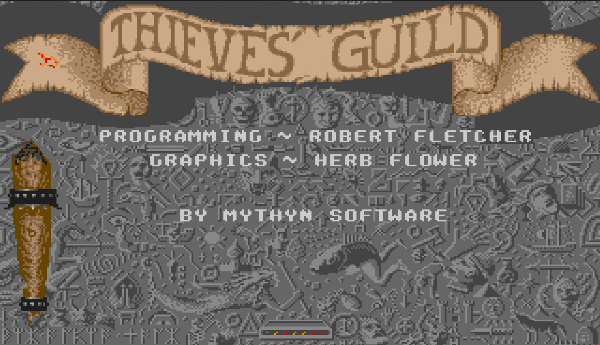
HERB: Hey, but that’s what makes a good game, right?
PAUL: Yeah.
HERB: People are always looking for content. If I was to go back in time and say, “Guys, Thieves’ Guild was great. Make it better.” I think I would add dozens more kinds of creatures to fight, more quests and events and stuff.
We did put a lot of love in it. And the Atari was really limited. To do what we did was about all you could do. You know what I mean?
Yeah. As something that a couple of people put together on their own, that wasn’t hosted on a big service like CompuServe, I don’t know how you could push it any farther. It was really impressive.
PAUL: Thanks for reaching out to us. Glad people are still interested in this stuff and documenting it. I do think it is a big part of history leading up to the internet.
HERB: And it only takes 42 disks to install. (laughs)
Try Thieves’ Guild
There is at least one BBS still hosting Thieves’ Guild: Dark Force BBS.
You can use any telnet client to connect to the BBS and play TG in ASCII, ANSI, or VT-52 mode.
But for the full graphics-and-sound experience, you should download the Thieves’ Guild front-end client and install it in Hatari. Once you’ve done that, you can follow my updated tutorial, on using tcpser to let terminals inside Hatari telnet to BBSes.
Did you play Thieves’ Guild back in the day? Have you tried it recently? Please share your experiences (or questions) in the comments. I’d love to hear from you.
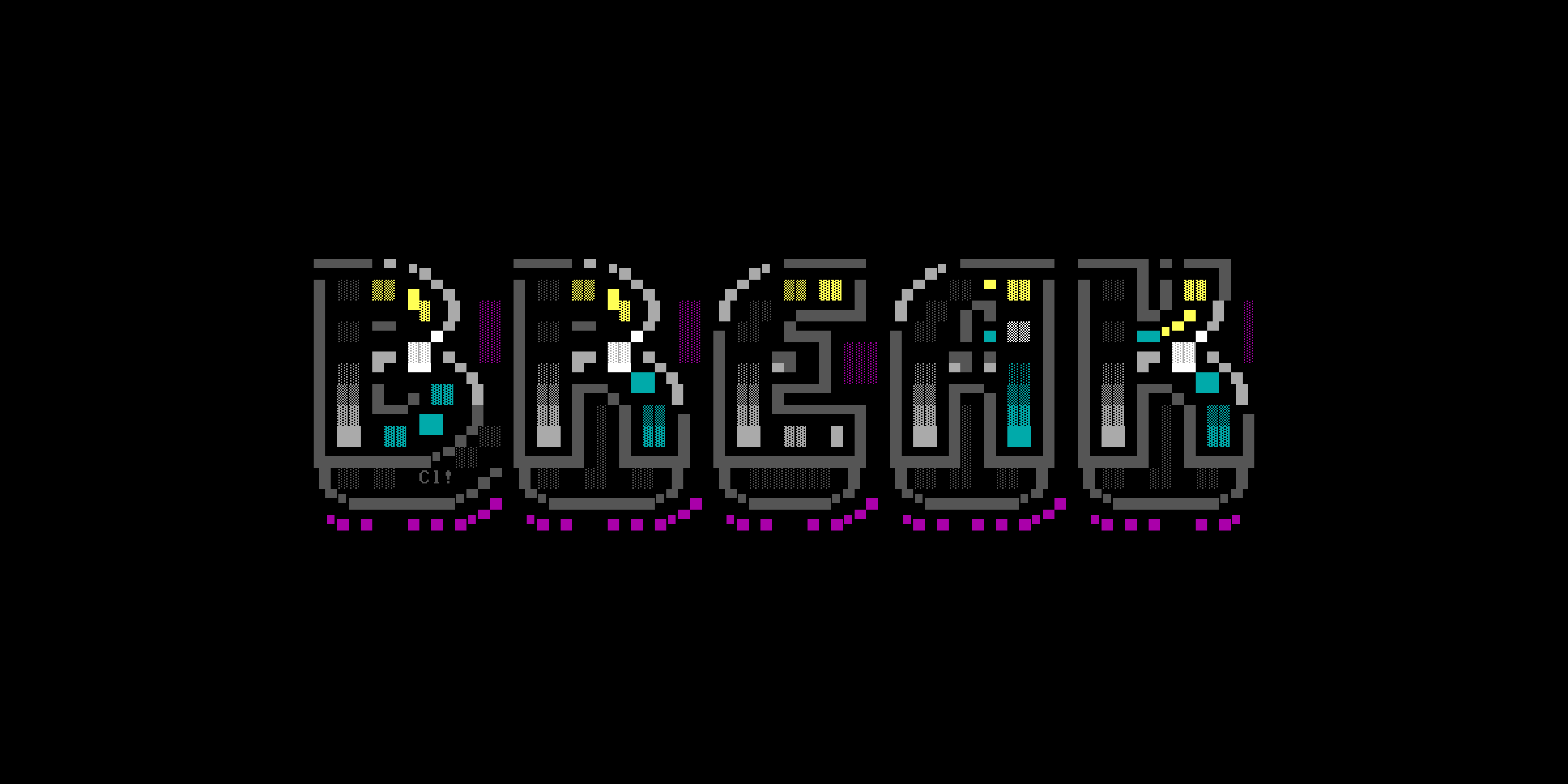
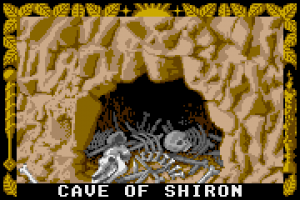
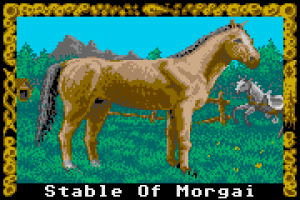
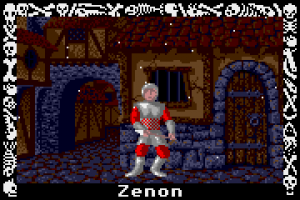
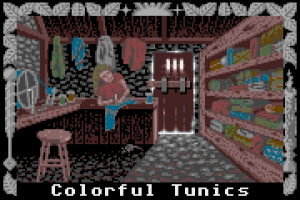
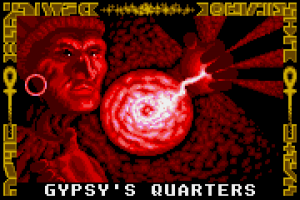
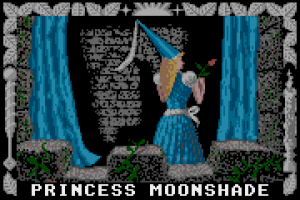
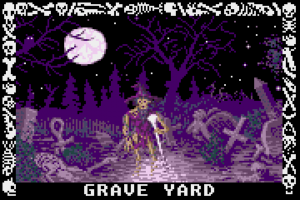
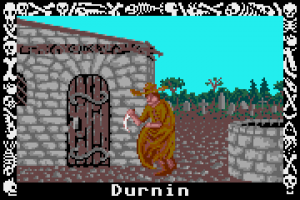
Share your thoughts!